We arrived in Dushanbe the day before the country's independence day, September 9th, hoping we would be able to witness a good parade and other associated celebrations. Given that we were staying only a couple of blocks from the Presidential Palace, surely this was not too much to expect?
The following morning we headed out early towards the Presidential Palace and were disappointed that there seemed absolutely no sign of any celebrations. Other than a few flags that we had noted the previous evening, it looked like it might on any Sunday morning. There were hardly any cars on the street and fewer people still. Either we were too early or these people were not too keen on celebrating, so we decided to walk around and see what else this city was about.
Dushanbe is a good looking capital with the wide, tree-lined prospekt (avenue) Rudaki as its focus. Roughly central on Rudaki is Maydoni Azadi which is surrounded by government buildings. Occupying a prime place in the square is the towering statue of Shah Ismail Samani, the founder of the Samanid dynasty. Close by, a grand new park is under development with a massive flagpole, a tall fountain and a large landscaped area that will house statues and monuments. As one would expect in a capital city, it is also home to a few museums, the National Library etc. all close to each other. A particularly interesting looking edifice is the Writer's Union Building with sculpted stone figures of Persian writers like Firdausi and Omar Khayyam adorning the facade.
We took care of other pressing business like photocopying visa pages for potential checks on the street and changing money. Thankfully the exchange rate of the Tajik Somoni against the dollar is in single digits, so it actually fits in your wallet (unlike the Uzbeki Som that requires you to carry a special bag). Also the official exchange rate is fairly stable and there is no black market for the US dollar either.
As the day wore on, we found more and more people out on the streets, strolling in the parks and generally enjoying the beautiful sunny day. Compared to their brethren in the northern part of the country, the denizens of the capital are definitely less conservative both in dress and attitude. It is more common to see freer intermingling of the sexes here. By evening, Rudaki was teeming with people and the atmosphere was positively festive. Later that night we learned from our hotel staff that the celebrations were in taking place that morning but elsewhere and at some distance from the center of the city!
Next morning, we made a trip the the Khazahkstan embassy in the hopes of getting that visa tied and tucked. We filled out all the requisite forms and then learned that it would take 5 days to process our applications - evidently the visa request has to be sent to Astana! Since we did not plan to spend that long in Dushanbe we were about to give up. But V suddenly had an inspired thought. Could we apply in Dushanbe and pick up our visas in Bishkek?
The official made a few phone calls and came back after a few minutes admitting that was indeed possible. This could potentially save us days of waiting time in Bishkek (assuming similar wait time), so we submitted all the papers and came back happy.
If you expect to find your way around using maps or recognize business establishments when you walk past them, in this part of the world it is absolutely essentially to be able to read Cyrillic. Otherwise you may walk past several places screaming PECTOPAH (Restaurant) and still go hungry. We came to this realization quickly and since this was going to be true for the next several weeks as we travelled through Central Asia, we lost no time in learning the the cyrillic alphabet. Soon it got easier to recognize street names and place name making navigation infinitely easier. Our newly acquired skill kept us busy on the streets as we competed to read store names and billboards!
On the subject of billboards, it is common to see large posters of the (first and only) President Rakhmanov on many public buildings and hospitals throughout the country - saluting the troops, wearing a hard hat inspecting factories or kissing babies. Just by the sheer number of times some motorcade or another (with loud accompanying sirens and police cars driving at insane speeds) were seen arriving and departing from the Presidential Palace, he must be a very busy one. Photographing the Palace is prohibited (another nonsensical rule typical in a dictatorship) and M nearly got into trouble for trying to do just that. Though she got yelled at for taking a photo, none of the guards actually came by to check the camera and so the photo survived intact!
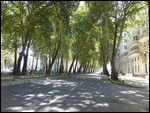
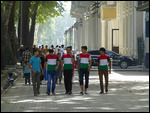

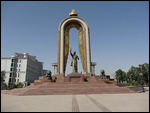
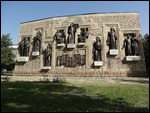


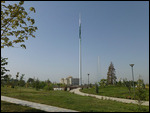

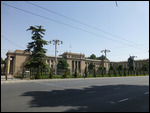
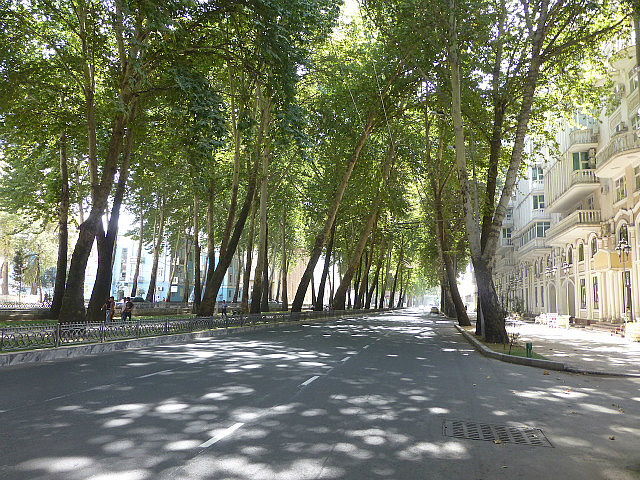

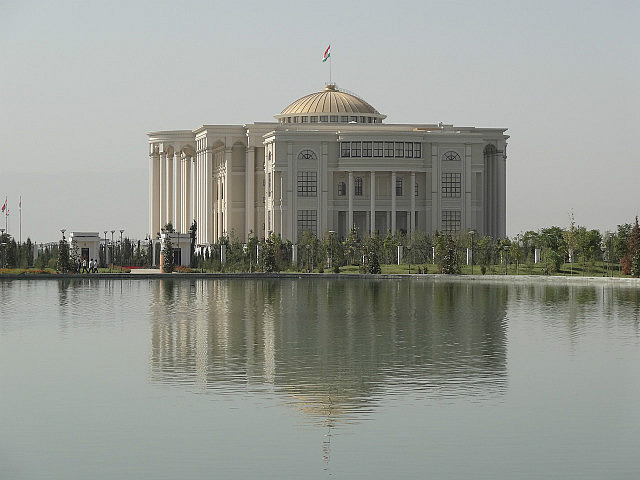
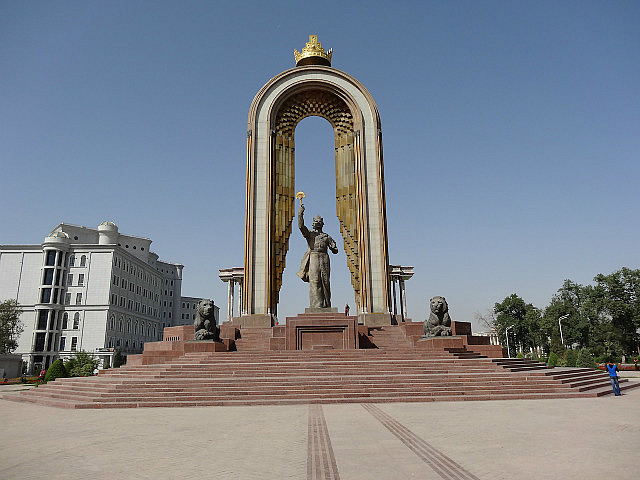

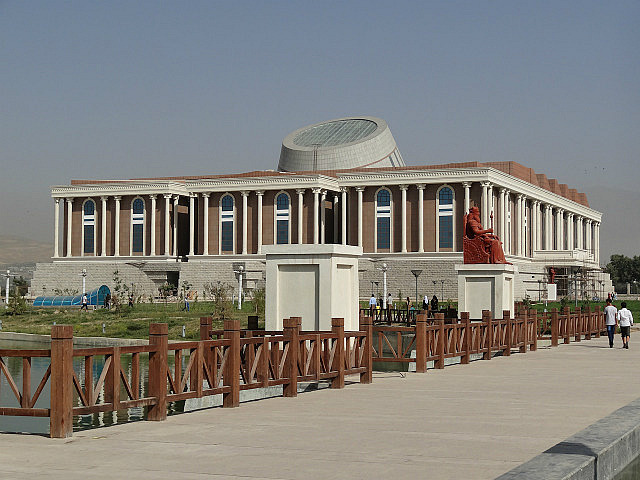

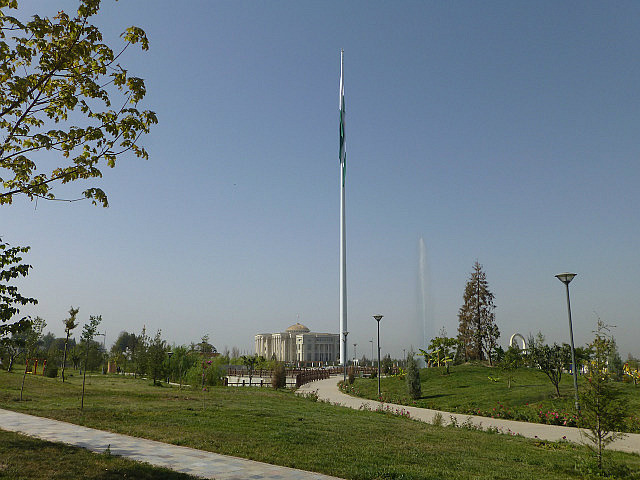
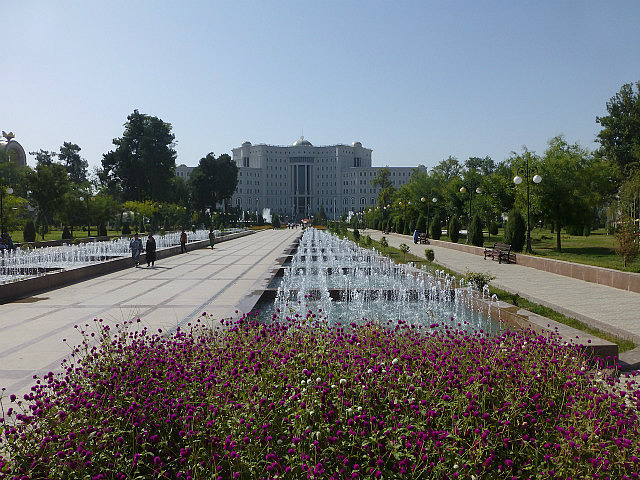
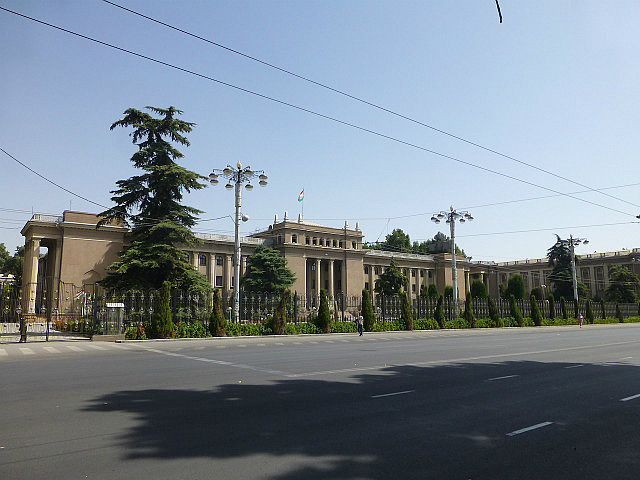
Comments